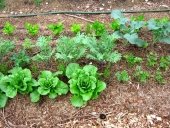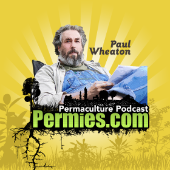Hi Daniel;
Welcome to Permies! And to permaculture. Exciting, isn't it?
I'll just drop my two cents worth in here, as I do have a little experience with creating a soil-less garden bed, because we have only sand. And rocks. And more sand.

In my case, I went with a buried wood bed, rather than an above ground hugelkultur as I believe it will catch and hold water better, and last longer without watering during the summers. Drought proofing the property is a major priority. But either way you build them, the lack of soil doesn't have to be a limiting factor. The only actual soil that went into my beds was with the transplants. My beds are topped with about 18 inches of year-old grass/weeds/leaves, some year-old Scotch Broom chips, and some sand mixed in with that. Then I just transplanted into that. It worked great! I had a very beautiful and productive garden this year (first year).
I will be adding more amendments in the spring: compost and more organic matter, some clay for more water retention and minerals, and seaweed (I live on an island, so I have lots of access to seaweed). These wood beds, whether buried wood or above ground hugelkultur, apparently hit their stride in about their third year, so I was pretty pleased with the first year being so productive. We had a much rainier that usual summer, but once the rains stopped I still had to water some. But not nearly as much as I would a regular garden bed in our sandy soil. It's soaking up the fall rains as we speak, so I'm hoping to water even less next year.
Just a word of caution - if you're building an above ground hugelkultur, make sure that you make it
very large. If you have hot dry summers (which I'm assuming you do in South Texas), they can dry out very quickly if they are too small. That's the reason I am using buried wood beds. I think they will be much less work in the long run, as I won't have to irrigate much eventually (that's the plan, anyway

). Which will also make it cheaper, as I won't have to purchase irrigation equipment.
There's a thread about buried wood beds that might be helpful here:
https://permies.com/t/52077/Buried-Wood-Beds
Good luck with your permaculture adventures! And don't hesitate to ask questions. We love to share our knowledge and experiences!
Cheers
Tracy











